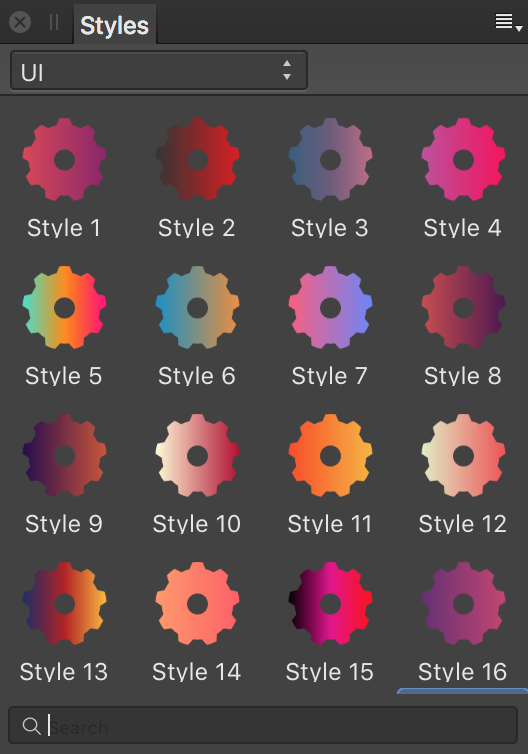
The square is taken to the symbol collection in the beginning. That layer has been duplicated and the duplicate has got bright greenish gradient fill which ends to transparency.

There’s a brown egg in the bottom with normal fully opaque gradient fill. If we separate the parts, we can see them better. That makes also vector noise patterns worth to consider you can tile small shapes enough to cover the needed area.Ī brown shape has greenish overlay which is masked with a grainy pattern. High resolution bitmaps do the same if you have plenty of them. Complex noise patterns are more effective as bitmaps, because a big vector pattern can freeze your program. You need only one color, because vector shapes define colors. You can use imported noise patterns as masks for your arty vector shapes. This, of course is only guessing, but it explains the non-editability and why the noise pattern do not move when one moves a noisy shape. It cannot be different for separate objects because that would make everything slow.
#AFFINITY PHOTO GRADIENT FULL#
Obviously somewhere under the hood sits a generated or fast to regenerate full page noise pattern which is taken to renderings in the fly. That noise hasn’t other parameters than depth. This doesn’t work very well because the noise is computer generated and it lacks the artistic impression that we see in wild any modern flat illustration which uses the effect. The other option is to duplicate the layer, fill it with noise from color tab and then use the transparency tool to control the opacity. Now either I couldn’t use it well or something else is wrong but the pixel brushes give me very pixelated brush-marks I tried both default and paid brushes. And none of them quite yields the desired effect. But for Affinity Designer, the options are scarce. This is pretty easy to do in Photoshop and Illustrator I believe. What it actually does is create a gradient of noise or spots and blotches to shape up the colour-values more definitively. Still for the record, here is an example. Some call it grain texture, some call noise brush and some call it ” salt and pepper ” technique. This kind of noise texture is very much in trend from material design to modern vector illustrations.

Connect and share knowledge within a single location that is structured and easy to search. Graphic Design Stack Exchange is a question and answer site for Graphic Design professionals, students, and enthusiasts. This resource was generously provided by: DreamScape Visionery, LLC. This is a swatch collection of all of the gradients used to make the Dream Styles 1 and Dream Metals Styles collections, making it easy to grab your favorite gradient to use rather than applying a style to get it. Paint the layer in Pixel persona with a grain brush. What it actually does is create a gradient of noise or spots and blotches to shape up the colour-values more definitively.This will create you ted Reading Time: 2 mins. 4- Click on your design and drag a line across your design. 3- To make a gradient fill, select the gradient fill tool in the left toolbar. Click on the colour picker tool and fill with colour. 2- Create you shape/design and select it. Gradient Fill tool in Affinity Designer.
#AFFINITY PHOTO GRADIENT FREE#
This will create you ted Reading Time: 2 mins.Īffinity designer gradient noise free download.Affinity Designer Free


Sign up and get a Free ebook!.Gradient Fill tool in Affinity Designer | Design Bundlesĭream Gradients 1. Schuylkill League Advance Ticket Proceudres.Schuylkill League Gate Ticket Procedures.Schuylkill League Playoff Gate Ticket Report.


 0 kommentar(er)
0 kommentar(er)
